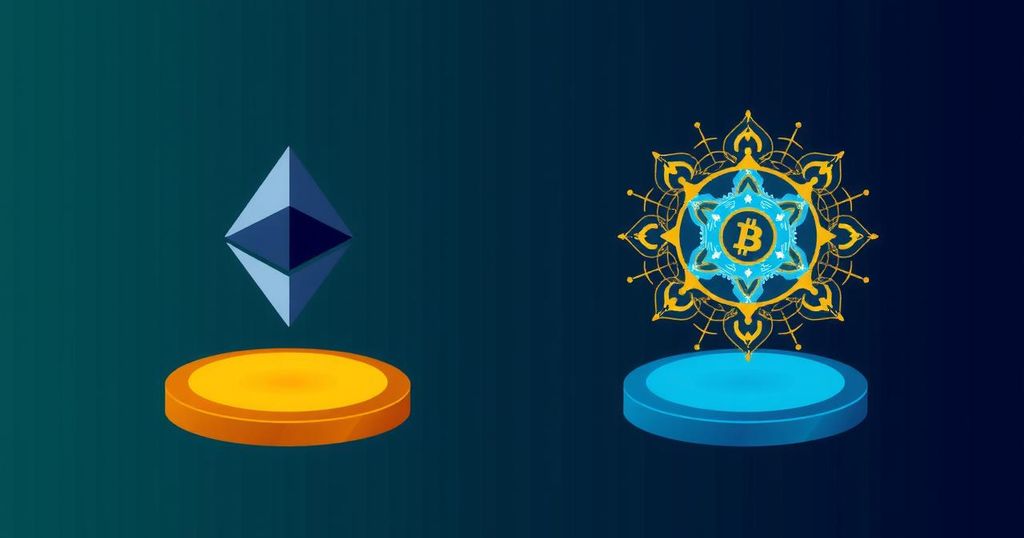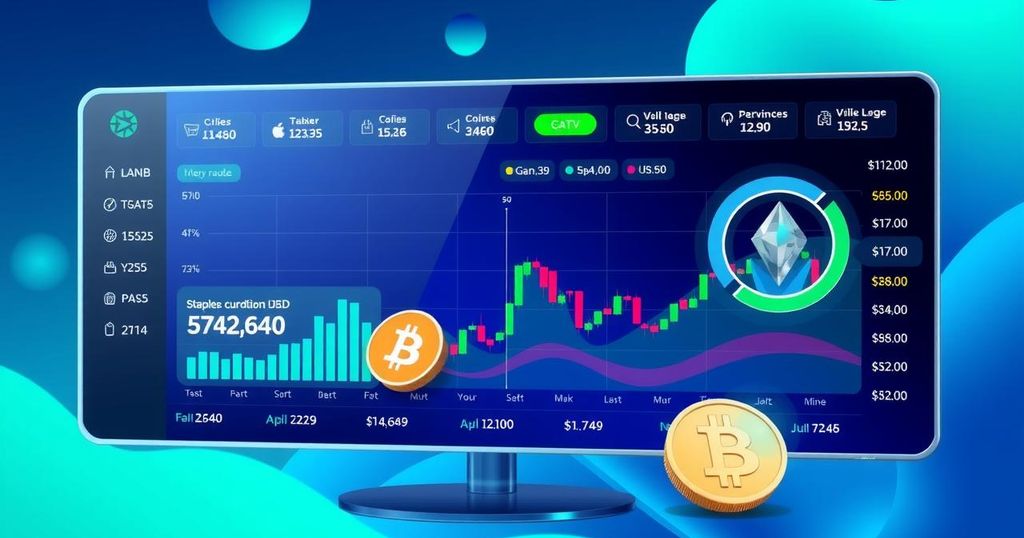Ethereum vs. Solana: The Blockchain Power Struggle Unfolds
Ethereum and Solana are locked in a fierce battle for dominance in the blockchain space. While Ethereum leads in DeFi and institutional trust, Solana’s exceptional speed and low fees attract a growing user base. Historical contexts show Ethereum’s stagnation against Solana’s rapid ascent. Metrics suggest Ethereum is stable, but Solana holds explosive growth potential. Both networks offer unique advantages, appealing to different markets amidst the ongoing altcoin race.
In the epic arena of blockchain, Ethereum (ETH) and Solana (SOL) stand as titans, each wielding its unique arsenal in a battle where the stakes are the very essence of decentralized finance (DeFi). While Ethereum, with its storied history since its inception in 2015, has entrenched itself as the go-to for institutional-grade projects, Solana, a newcomer from 2020, struts in with lightning-fast transactions and ultra-low costs, drawing in an ever-increasing user base eager for the thrill of meme coins.
Ethereum’s rich legacy is adorned with smart contracts that launched a revolution, yet its transition to proof-of-stake (PoS) has not come without teething pains. With a sluggish transaction capacity of about 30 per second and susceptible to exorbitant gas fees during peak times, it struggles against the winds of change. In contrast, Solana employs its innovative Proof of History (PoH) mechanism, cutting through transaction delays and costs like a hot knife through butter, achieving an astounding throughput of 65,000 TPS. This dazzling efficiency makes Solana particularly appealing to newcomers and users seeking affordability without sacrificing speed.
The current metrics of both blockchains tell a compelling tale. Ethereum reigns with a staggering total value locked (TVL) of $64.6 billion, supported by a robust ecosystem of decentralized applications (dapps) and a large army of developers at over 400. Meanwhile, Solana has harnessed a burgeoning TVL of $8.9 billion, invigorated by over 1 million active wallets and ambitious applications like Jito and Raydium, capturing an enthusiastic audience with its high-speed potential and negligible fees.
Price dynamics further illustrate the rivalry. As Bitcoin climbs towards exorbitant heights, Ethereum has quietly appreciated by 40% within recent weeks, still not quite matching the dramatic gains of Solana, which has surged over 70%. Encouragingly, the analysis suggests that both coins may have remarkable growth trajectories, with Ethereum poised for a 3x increase and Solana leading with potential growth of 5-7x in this cycle.
Evaluating their core offerings reveals two distinct philosophies. Ethereum’s diverse ecosystem appeals to institutional investors hungry for stability and decentralization, exemplified by the burgeoning inflows into Ethereum-associated ETFs. Solana, thriving in its niche, captures the imagination of retail investors and everyday users, especially within the vibrant realms of decentralized exchanges and gaming applications. However, both chains face their respective imperfections: Ethereum’s persistent challenges with high fees and Solana’s centralization concerns due to its limited number of validators.
In this thrilling contest for the crown of altcoins, agility and user-base capture could decide the victor. If Solana continues to drive its engagement levels like a rocket in flight, it could eclipse Ethereum in this market cycle. Yet, Ethereum’s robust architecture and established reputation may reclaim its throne as the stalwart for institutional-grade projects.
In summary, Ethereum envelops developers and long-term investors with its cautionary embrace, while Solana dazzles with agility and cost-effectiveness, ensuring its place as a rising star in this exhilarating crypto tapestry. Both chariots of the blockchain world charge forward on their intersecting paths, impressively framing the blockchain narrative of today’s decentralized horizon.
The competition between Ethereum and Solana is rooted in their fundamentally different approaches to blockchain technology. Launched in 2015, Ethereum introduced smart contracts and has since become the backbone for both DeFi and NFTs, despite its limitations in transaction speed and high fees. In contrast, Solana, launched in 2020, offers a unique consensus mechanism that prioritizes speed and affordability, appealing to a growing user base seeking instant transactions and minimal costs. Their fight for dominance is reshaping the landscape of decentralized services and applications.
Ethereum and Solana represent two distinct paths in the blockchain world, with Ethereum’s legacy fostering security and institutional interest, while Solana’s innovation captures user enthusiasm with its swift, cost-effective transactions. As both chains evolve, their strengths and challenges will dictate their respective futures in the ever-competitive altcoin sphere. Solana could potentially capture more speculative investor interest this cycle, but long-term, Ethereum’s stability provides it an enduring stronghold as a premier platform for serious applications.
Original Source: news.bitcoin.com




Post Comment